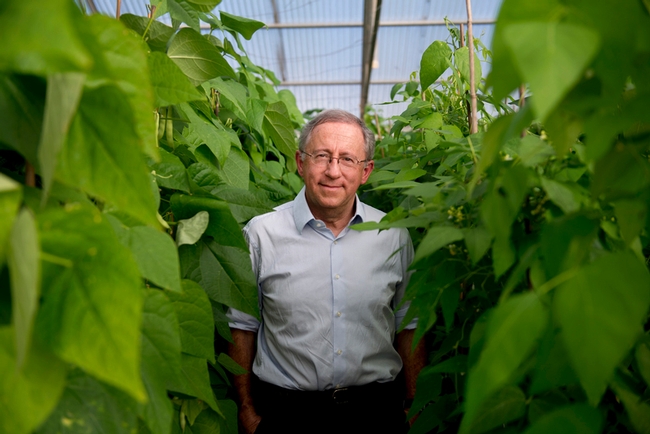
As you're ladling up country-style pinto beans for your weekend barbecue or fixing a cold three-bean salad from kidney, string and navy beans for a summer picnic, pause to remember what a long and storied history these “common bean” varieties share and the new scientific advances that promise to boost their productivity worldwide.
This week, a new genome sequencing is being reported for the common bean, which ranks as the world's 10th most widely grown food crop and includes the culinary favorites above, whose varieties together comprise a $1.2 billion crop in the United States.
“The availability of this new whole-genome sequence for beans is already paying off,” said Paul Gepts, professor in the Department of Plant Sciences at UC Davis and co-author of the new sequencing study.
Gepts, who leads the bean-breeding program at UC Davis, notes that the new sequence is being used to confirm many of the findings made earlier by his UC Davis research group, including identification of the common bean's two points of origin and domestication.
Sequencing and bean ancestry
The common bean is thought to have originated in Mexico more than 100,000 years ago, but -- as the Gepts group earlier discovered – was domesticated separately at two different geographic locations in Mesoamerica and the southern Andes.
“This finding makes the common bean an unusually interesting experimental system because the domestication process has been replicated in this crop,” Gepts said.
The sequencing team compared gene sequences from pooled populations of plants representing these two regions and found that only a small fraction of the genes are shared between common bean species from the two locations. This supports the earlier finding that the common bean was domesticated in two separate events -- one at each location -- but distinct genes were involved in each event.
The new whole-genome sequencing is also helping to identify genetic “markers” that can be used to speed up breeding of new and more productive bean varieties in the United States, East Africa and elsewhere, Gepts said.
The nitrogen connection
All of bean varieties that belong to the “common bean” group share with the closely related soybean the highly valued ability to form symbiotic relationships with “nitrogen-fixing” bacteria in the soil.
The plants and the bacteria work together to convert nitrogen in the atmosphere into ammonia – which includes nitrogen in a form that enriches the soil and feeds crops. Nitrogen-fixing crop plants can actually reduce or eliminate the need for farmers to apply expensive fertilizers.
One goal of the new sequencing project was to better understand the genetic basis for how such symbiotic relationships between nitrogen-fixing plants and bacteria are formed and sustained, with an eye toward increasing fuel- and food-crop productivity.
The research team successfully identified a handful of genes involved with moving nitrogen around, which could be helpful to farmers who intercrop beans with other crops that don't fix nitrogen.
Findings from this study are reported this week online in the journal Nature Genetics. The sequencing project was led by researchers at the University of Georgia, U.S. Department of Energy Joint Genome Institute, Hudson Alpha Institute for Biotechnology and North Dakota State University.